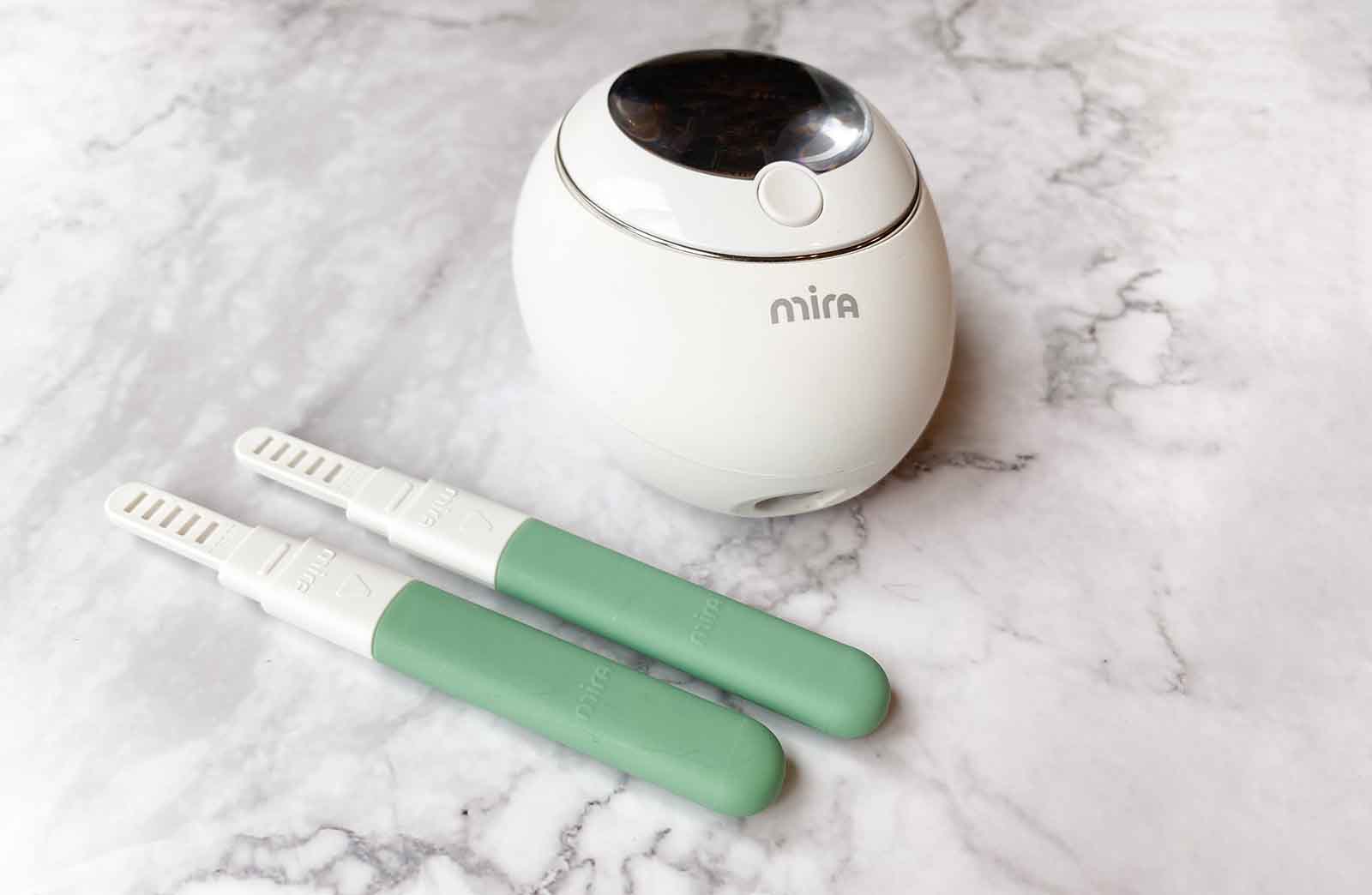For a long time there has just been one fertility monitor that’s compatible with the Marquette Method of NFP—the Clearblue Fertility Monitor.
Well, that’s changing. Or at least … it’s starting to.
Enter: The Mira Fertility Monitor.
Should everyone using Marquette switch to Mira, the fancy new monitor everyone is talking about? No—it’s not necessary (nor even recommended) for most women.
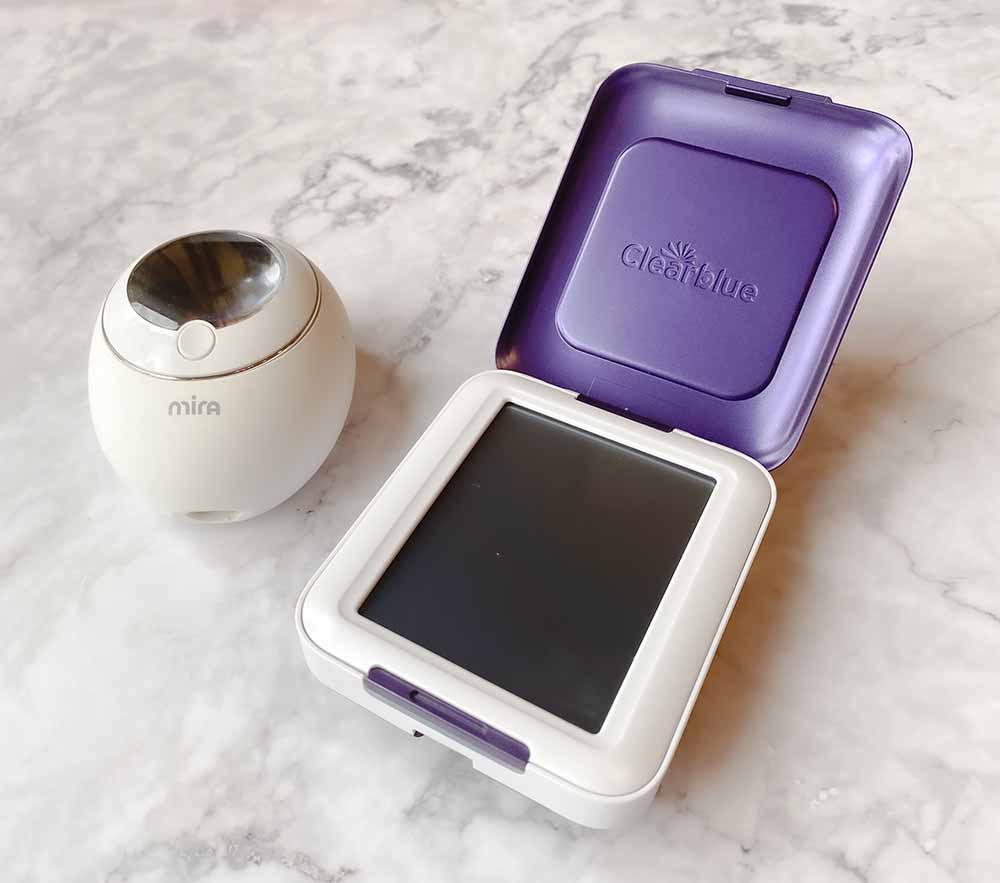
But we—the Vitae Fertility Marquette Method Instructors—have started recommending it for some women in some situations. The Mira Monitor gives a much more detailed picture of your day-to-day hormone levels, and that’s exciting.
So, here’s where Marquette’s Mira protocols stand, as of Winter 2025.
Marquette’s Mira protocols are provisional, literally “experimental” in the sense that, right now, only one small preliminary study has been completed to date (Bouchard, Fehring & Mu, 2021). Right now, the Marquette Institute for Natural Family Planning has 5 research studies ongoing with different cohorts of women (regular cycles, postpartum, perimenopause, PCOS, and with women undergoing chemotherapy).
The research is ongoing. The results aren’t back yet. So we still don’t know if Marquette’s Mira Monitor protocols are more effective, less effective, or similarly effective to Marquette’s well-studied Clearblue monitor protocols. The lack of published, peer-reviewed effectiveness studies is the main reason why we don’t recommend the Mira Monitor to everyone at this time. (Basically, we know how effective Marquette’s Clearblue monitor protocols are. We don’t know how effective Marquette’s Mira monitor protocols are, yet.)
So, with all the caveats aside, we thought it was high time to lay out the main differences between the monitors. Because, of course, it’s your choice!
After going through the similarities and differences between the monitors for NFP tracking purposes we will explain to you the approach we’re following at Vitae Fertility for women who want to follow Marquette’s provisional Mira Monitor protocols—so you know what to expect if you want to work with us.
| Mira Fertility Monitor | Clearblue Fertility Monitor | |
|---|---|---|
| Fertility results (details) | Numerical values of actual hormone levels (e.g. “LH = 15.5 IU/L”) | Simple, clear fertility readings (e.g. low fertility, high fertility, peak fertility) |
| Hormones tested (details) | Luteinizing hormone (LH), Estrogen, Progesterone, Follicle Stimulating Hormone (FSH) | Luteinizing Hormone (LH), Estrogen |
| The Tech (details) | Handheld fertility monitor + integrated mobile App. | Handheld fertility monitor (no integrated mobile app) |
| Testing times (details) | Anytime, any day of your cycle. | During the 6-hour testing window, testing begins at cycle day 6, at the earliest |
| Tests per day (details) | Unlimited | Maximum of 1 test per day |
| Cost (details) | About $3.25 USD per wand for a stick that tests LH + Estrogen | About $1.25 USD per test stick that tests LH + Estrogen |
| Power (details) | Micro-USB charging port | Alkaline Batteries |
| Regular cycles protocol effectiveness rate (details) | Unknown, preliminary studies underway. | 98.4% effective in perfect use, 98% effective with typical use (Fehring & Schneider, 2017) |
| Breastfeeding protocol effectiveness rate (details) | Unknown, preliminary studies underway. | 98% effective with perfect use, 92% with typical use (Bouchard, Fehring & Schneider, 2013) |
Fertility Results
Mira returns numerical values while Clearblue returns fertility levels
Both monitors test your urinary hormone levels. After measuring your exact hormone levels the Clearblue monitor translates these results into one of three possible results—low fertility, high fertility, or peak fertility. The monitor returns the first “high fertility” result of the cycle when it identifies a rise in estrogen levels compared to the baseline level set on the first day of requested testing. The first “peak fertility” result is prompted by the identification of a surge in your LH levels compared to the level it was yesterday. Marquette’s Clearblue monitor protocols take the pattern of Clearblue monitor readings and use it as a tool to determine the fertile window in your cycle.
Marquette’s Clearblue monitor protocols are really simple. And, for most women, this simplicity is a virtue! There’s just less confusion and less chance for human error when you’re dealing with just three possibilities—low, high, peak. (The simplicity of the system is a huge part of why many people choose Marquette in the first place.)
The Mira monitor is also based in urinary testing, but instead of simplifying the results, the Mira monitor returns the exact concentrations it measured in the urine sample.
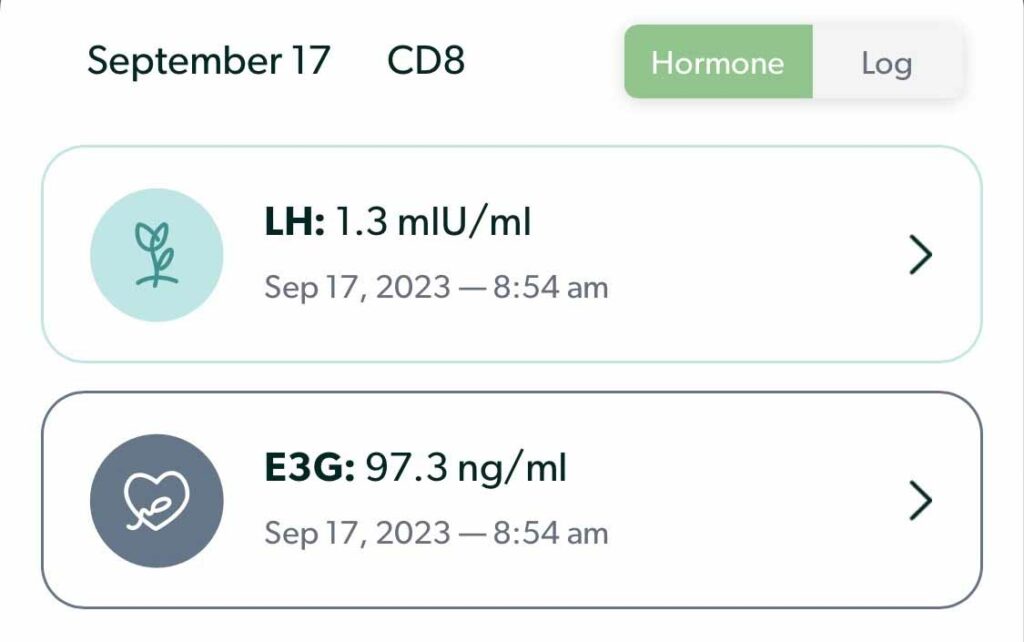
The level of detail Mira provides isn’t necessary for everyone. But for some women, and in particular those who have irregular or confusing cycles, the Clearblue monitor may not be able to give us enough information to understand what’s actually going on in your cycles. These are the cycles where the Mira monitor can be really helpful. So, if we need more data, Mira can provide that.
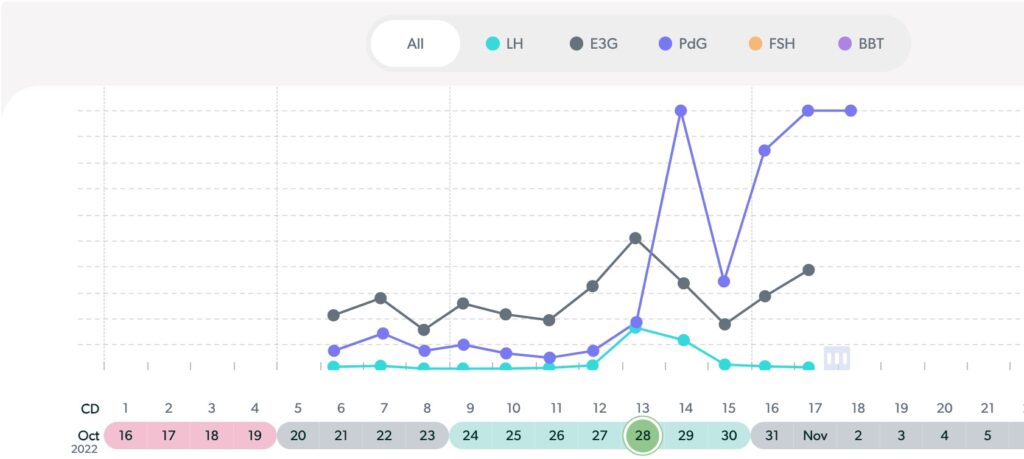
Hormones Tested
Clearblue tests 2 hormones (estrogen and LH) while Mira tests 4 hormones (estrogen, LH, progesterone, and FSH)
The second big difference between the Clearblue monitor and the Mira monitor is that the Mira monitor can test two additional hormones—progesterone and FSH. Elsewhere on our blog we explain why testing LH is such a game-changer for NFP and how testing estrogen levels directly, rather than tracking them symptomatically can take much of the guesswork out of NFP.
But why might it be helpful for a woman to test her progesterone levels? The big difference is that progesterone is a confirmation of ovulation. Everything else we can track—like LH, estrogen, mucus—are predictive of ovulation. Progesterone, on the other hand, is only present after ovulation. Once the follicle releases the egg, it transforms into a temporary gland which is responsible for secreting progesterone. No ovulation, no gland and thus no progesterone. The Mira monitor allows us to confirm ovulation by tracking a woman’s progesterone levels day-by-day, and so we can clearly see the progesterone rise that happens after ovulation.
The Mira monitor isn’t the only way a woman can test her urinary progesterone levels (the Proov test is also available, and some women use Marquette with the Proov sticks) but, again, Mira is the only way for women to get reliable, numerical results at home.
Testing follicle stimulating hormone (FSH) is helpful for women who are in perimenopause (the majority of women using the Mira monitor for Marquette will not benefit from testing their FSH levels). But, if you are in perimenopause FSH testing can be very beneficial for getting a general idea on what stage of perimenopause you are in.
The Tech
The Clearblue Monitor is a standalone device while the Mira Monitor is connected to the Mira App
Unlike the Clearblue monitor, the Mira monitor has an associated mobile app and … we love it. The monitor syncs to the Mira app on your phone via Bluetooth so that your data gets backed up daily to the cloud. With the Mira monitor you can opt to share your cycle data in real time to your Vitae Fertility instructor so that when you have a cycle question we have exactly the same information you do to help you determine how to proceed. The Mira app does not completely negate the need for NFP charting, but it does automate a lot of it.
It might seem silly to even mention, but another practical difference between the two devices is that the Clearblue monitor requires batteries (and can be a bit of a battery hog) while the Mira monitor is powered by a lithium battery with a micro-USB charging port. The Mira monitor can be used while it’s plugged in, so you can still use the monitor even if your battery is completely drained. Because your cycle data is backed up to the cloud you won’t lose your data if the Mira monitor completely runs out of power. You can lose your data if you don’t replace the batteries in your Clearblue monitor promptly after the “low battery” warning appears.
Testing Times
Clearblue has a 6-hour testing window but with Mira you can test any time of day or multiple times in the same day
The Clearblue monitor has you set a 6-hour testing window each cycle – which determines the timeframe that you can test each day, but with Mira you can test at any time of day. Clearblue will never allow you to test more than once in a day, but with Mira you can—which means that as your instructor we can help devise a more personalized NFP monitoring plan, specific not just to your fertility cycles but even to your life!
Some women who travel between time zones frequently or work shift work prefer the Mira monitor for the flexibility it allows in testing. But remember, consistency in testing is still important. There was a biological reason why Clearblue has a testing window—if you’re testing at 3:00 pm one day and 10:00 am the next day, you’re going to get inconsistent, confusing or even inaccurate results. We’ll include information on testing times in your personalized Marquette Mira Monitor testing plan (see below).
Testing Days
Clearblue allows tests beginning on cycle day 6 but with Mira you can test on any day
The Clearblue monitor was designed for women who have cycles 21 to 42 days long and it never allows you to test before day 6. It adjusts to your cycle history and if you have longer cycles it may not begin asking for tests as late as cycle day 9.
The Mira monitor was designed for women who have irregular or confusing cycles. It allows you to test everyday if you need to or want to. It’s always ready for a test!
There are obvious upsides to all this flexibility that Mira allows, but there’s a less-obvious downside, too.
Mira will let you test every day … but should you?
That’s where your instructor comes in. If you’re a Vitae Fertility client using Marquette’s Mira protocols, we give you a personalized testing plan that’s laser focused on getting the information we need to be confident that we’re tracking your cycle as accurately as we can … without you wasting money on wands unnecessarily. We’ll tell you exactly which sticks to buy, when to use them, and why.
Cost
Clearblue Monitor test sticks are less expensive than Mira Monitor fertility wands
Which brings us to the biggie—cost. Clearblue Monitors and Mira Monitors cost about the same, so the start-up cost isn’t significantly different.
The big difference is in the ongoing costs. Mira wands are significantly more expensive than the Clearblue monitor test sticks. As such, it’s more expensive to use Marquette’s Mira monitor protocols (on a monthly or per-cycle basis) than Marquette’s Clearblue monitor protocols. For an apples-to-apples comparison the Clearblue test sticks (which measure estrogen and LH) usually cost about $1.25 USD per stick. Mira’s “Fertility Plus” wands (which likewise measure estrogen and LH) cost about $3.25 USD per stick. So, very roughly speaking, you can expect that your monthly cost for using Mira is a little more than double what you’d be paying for using the Clearblue monitor to test the same hormones.
With the Mira monitor you can also test your progesterone levels, and Mira’s progesterone wands (called “Confirm Wands”) run about $68 for 20 wands (about $3.40 per stick). Women using Marquette’s Mira protocols usually use 4 Confirm wands per cycle, which works out to be an extra $14 per cycle for progesterone testing. Not every woman will need (or want) to test their progesterone levels, so ask your instructor if you’re planning on using Marquette’s Mira protocols before you purchase progesterone sticks.
Unless you’re in perimenopause you’re unlikely to need to test your FSH levels, but if you do those sticks come (called “Ovum” Wands) come in packs of 10 wands and cost $45 per box (or $4.50 per wand). Most women will only need to use one FSH wand per cycle.
Your personalized Marquette + Mira testing plan will tell you exactly which sticks you need to use (and which ones you don’t.) Testing with Mira is always going to be more expensive than testing with Clearblue (because the sticks are more expensive), but with a Vitae Fertility instructor you’ll know that you’re not testing any more often than you need to!
What does all this mean for using Mira for Natural Family Planning (NFP)?
Marquette’s Clearblue monitor protocols are very effective.
Marquette’s Mira monitor protocol effectiveness rates are unknown—studies are ongoing.
If you’re using natural family planning to avoid pregnancy, then method effectiveness is likely your #1 concern. Many people switch to Marquette because of how effective it is (and because those effectiveness rates are backed by peer-reviewed research.) People come to Marquette because they need to know that its effectiveness rates are reliable. We’ve written extensively on the Marquette Method regular cycles effectiveness rates and the Marquette Method breastfeeding protocol effectiveness rates. We take method effectiveness very seriously, and you should too!
Marquette’s Mira monitor protocols—the instructions you’d be following if you’re trying to avoid—are currently labelled “provisional.” The Marquette University Institute of NFP is updating them frequently. Every month the Institute is reviewing the data and revising the protocols if needed. We are both involved in these studies (as is Katie Schweinsberg). We are up-to-date on the very latest recommendations coming from Dr. Bouchard and the lead investigators on the team. If you’re using Marquette’s Mira protocols under the direction of a Vitae Fertility instructor you can rest assured that you will always be following the latest protocols; if there are any changes, you’ll be the first to know!
We tell any of our clients who are considering using the Marquette Mira protocols that these are still experimental. For some women, being part of an ongoing medical study is exciting, but other people would much rather rely on Marquette’s tried-and-true protocols. Choosing between them is a personal choice, and it’s one you need to make for yourself. As nurses, we’re committed to informed consent—that’s why we wrote this post.
We should mention, of course, that you can use both monitors concurrently. It’s expensive, but it’s certainly possible to follow Marquette’s Clearblue monitor protocols to determine your fertile window (and abstain accordingly) but also use the Mira monitor to have greater insights into your actual day-to-day hormone curves—giving us a chance to understand what’s really behind any cycle irregularities that you might be experiencing … so that we can help you fix them.
How Vitae Fertility Teaches the Marquette Mira Protocols
At Vitae Fertility Education, we’ve always taught couples one-on-one.
Our company philosophy has always been that women deserve customized, personalized Marquette Method Instruction.
The introduction of a new set of Marquette protocols doesn’t change that.
We don’t have a different teaching package for women who want to use Mira vs. women who use Clearblue. This is because we want to help you find the best monitor for your personal situation. And we know that you want to remain flexible—even if you start with the Clearblue monitor today, you could decide to switch to the Mira monitor later (or vice versa.) We wouldn’t want you to have to sign up for another class just because you’re switching monitors. Our packages and follow-ups are all-inclusive, the same as ever.
Louise wrote two Marquette Method NFP manuals that are sent to all Vitae Fertility clients—they’re at the core of how we teach Marquette (you can preview the books here). These books include both detailed information on the science of NFP and specific step-by-step instructions on how to use the Clearblue monitor to use Marquette.
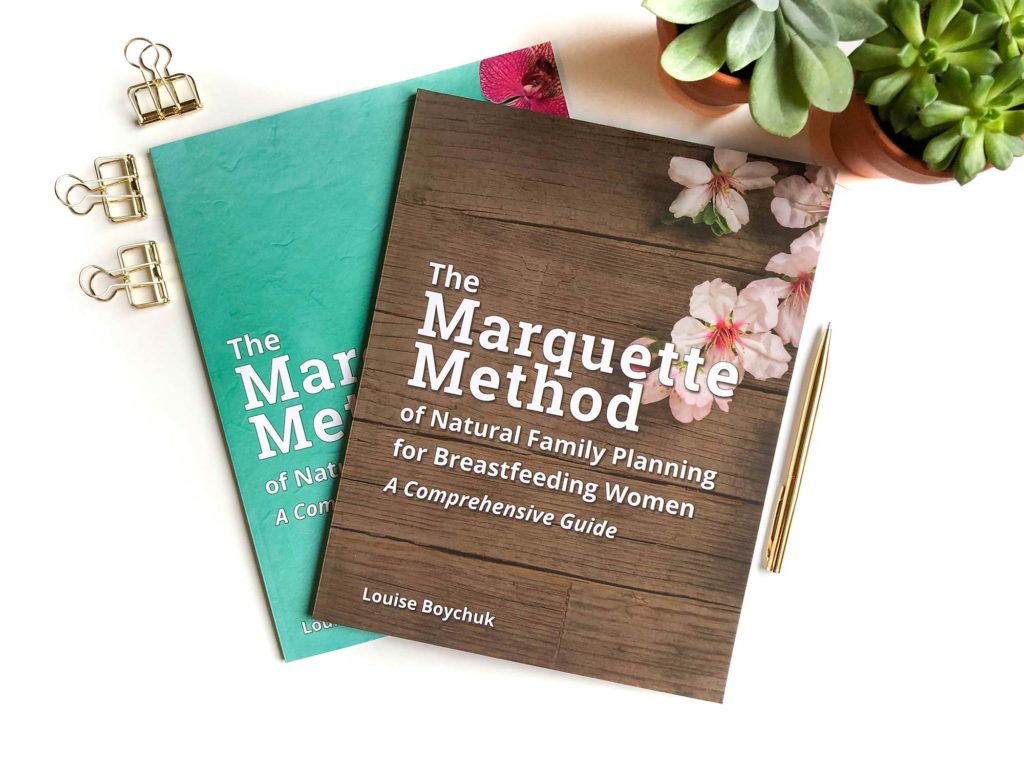
Louise has not updated her books yet to include the Mira protocols because the protocols are still being updated regularly.
So, if you’re going to be following Marquette’s Mira protocols we will still send you a Marquette Method Manual (because the sections on the science of NFP are as relevant as ever) but we’ll also set you up with a personalized Mira testing plan.
We’ll develop this with you during your initial teaching session and it will be specific to you and your cycles. You’ll get clear instructions on how to follow the Marquette Mira protocols correctly—day by day—just as people following Marquette’s Clearblue monitor protocols do with the manuals.
And, of course, we’ll always be available to answer all of your questions and be on-call to help you interpret your results—all of our Marquette Method teaching packages include one year of unlimited follow-ups with your instructor.
It’s an exciting time to be a Marquette Instructor—we feel like we’re literally watching science happen before our eyes.
Wondering if the Marquette Mira protocols are a good choice for you?
Now that you’ve heard about Marquette’s Mira protocols and how we’re integrating them into our practice you might be thinking “hmm, I wonder if the Mira monitor would help me in my fertility tracking?”
If so, we welcome you to reach out to us for a free, no-obligation consult. We’d be glad to help you decide which monitor is going to be the best fit for you, your life, and your cycles!
References:
Bouchard, T. P., Fehring, R. J., & Mu, Q. (2021). Quantitative versus qualitative estrogen and luteinizing hormone testing for personal fertility monitoring. Expert review of molecular diagnostics, 21(12), 1349–1360. https://doi.org/10.1080/14737159.2021.2000393
Bouchard, T., Fehring, R. J., & Schneider, M. (2013). Efficacy of a new postpartum transition protocol for avoiding pregnancy. Journal of the American Board of Family Medicine, 26(1), 35–44. https://doi.org/10.3122/jabfm.2013.01.12012
Fehring, R. J., & Schneider, M. (2017). Effectiveness of a natural family planning service program. MCN, The American Journal of Maternal Child Nursing, 42(1), 43–49. https://doi.org/10.1097/NMC.0000000000000296

